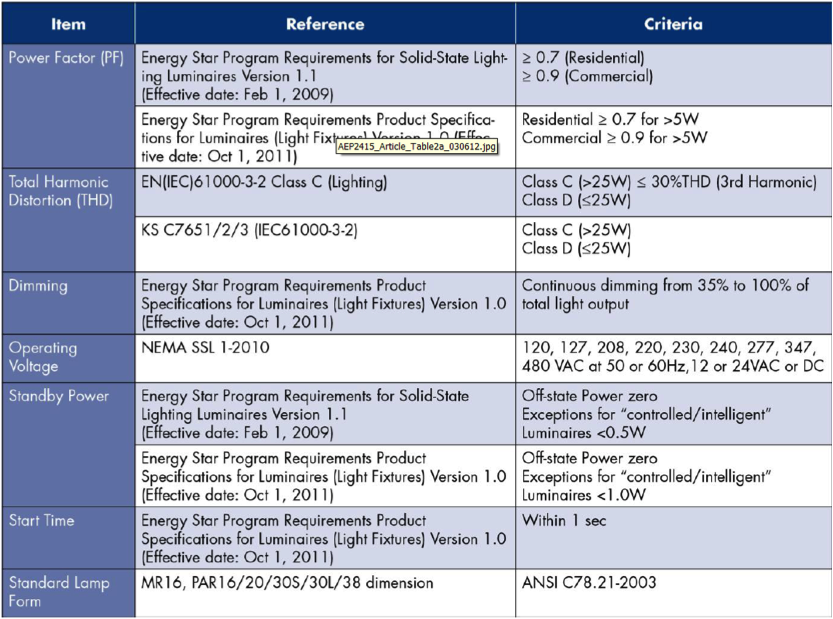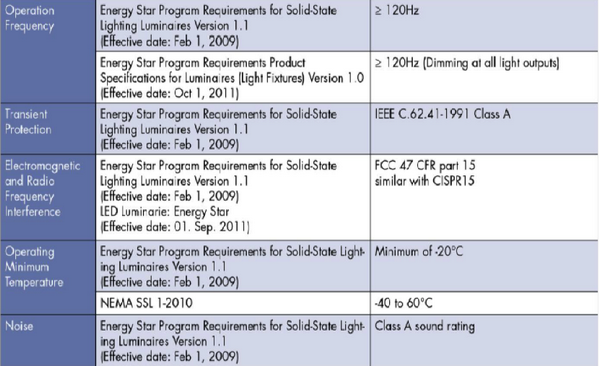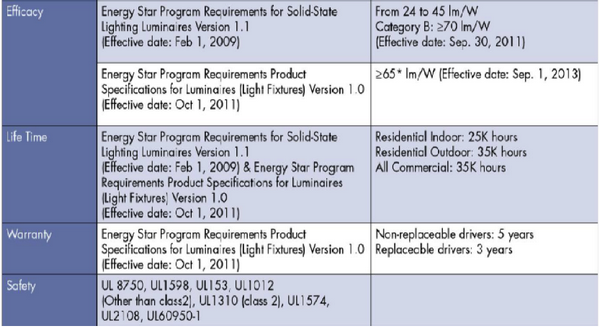LED Driver Standards & Agency Requirements
This is Part II in Fairchild Semiconductor's five part series that takes a big picture look at today’s low-power LED lighting trends. In Part I we reviewed the worldwide market for LED lighting and predictions for the potential of high-brightness LEDs. In this installment we will look at some of the many driver standards and governmental agency requirements designers need to be aware of.
There are many standards or agency programs for regulation of LED drivers, including both voluntary and mandatory programs. Table 1 is a sample of a few agency programs for lighting.
 |
|
Table 1: Sample of worldwide agency programs. (Source: Fairchild Semiconductors) |
The list should include FCC requirement 47 CFR part 15, Class A and Class B, Harmonic Emission limits ANSI C82.77-2002 or IEC 61000-3-2, safety standards UL 8750 or IEC 60650 Part 1, Line Transient protection IEEE C62.41.1991, Class A. or Class A audible noise. LM-80: specifies procedures for determining lumen maintenance of the LEDs and LED modules, not the luminaries. LM79 specifies procedures for measuring luminous efficacy. TM-21 specifies the method to determine expected operating life. Last, but not least, NEMA SSL 1 Electronic Drivers for LED Devices Arrays or Systems.
While there is a lengthy list of applicable standards, examining the Energy Star program requirements highlights many of the LED driver design requirements and is shown in Table 2. The items listed are focused on the LED driver, not necessarily the lamp or fixture.
 |
 |
 |
|
Table 2: Table 2. LED driver specific standard and agency requirements. (Source: Fairchild Semiconductors) |
Now that we have addressed standards and requirements, we can start considering driver designs. In Part III of this series we’ll take a look at driver design for two of the most common LED lamp sizes, MR11 & MR16.
Please visit our LED resource page to learn about Fairchild’s LED lighting solutions.
(Authors: James Lee, Brian Johnson and Richard Chung of Fairchild Semiconductor.)















